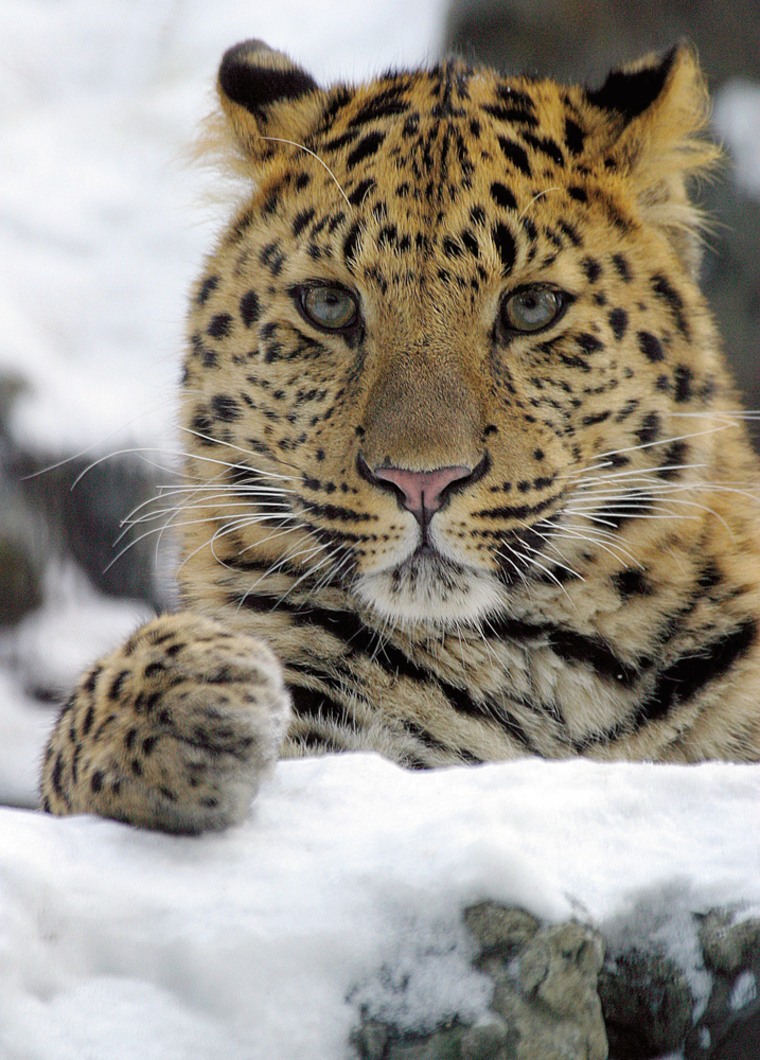A survey released Wednesday by Russia and conservation groups found few Amur leopards remaining in the wild, with conservationists concluding that logging, building, farming and poaching have virtually killed off the species.
There are only 25 to 34 of the graceful animals still living in the wild, the World Wildlife Fund said at a news briefing in Moscow to report on the census. At least 100 would be needed to guarantee the species' survival.
"The numbers are very disappointing and the long-term prospects are that they will not be able to survive unless urgent measures are taken," said Igor Chestin, head of WWF in Russia. He said he had hoped to report at least 35 leopards.
Oleg Mitvol, the head of Russia's state environmental watchdog, told the briefing he wanted to unify three protected areas where the leopards live.
That might result in better control of hunting of the leopards' prey and stem the encroachment of towns and farms on their habitat.
This year the Russian government changed the route of a planned oil pipeline to avoid slicing through the area.
The Amur leopard has longer legs and fur than other leopard species, allowing it to prowl and hunt with ease in the snowy eastern fringe of Siberia.
"Everybody thinks this is a truly beautiful animal," Michiel Hotte of the Zoological Society of London said. "It has a long, pale coat and stands very tall which makes its movements very elegant and beautiful."
The Amur leopard used to roam freely around the Korean peninsula and northeast China but farms, villages and roads have eaten away at its forest habitat where it hunts for deer, hare, badgers and small rodents.
Chinese medicine substitutes crushed leopard bones for tiger bones in some of its remedies, creating demand for the cat.
Hotte said at the beginning of the 20th century there were several thousand Amur Leopards.
The animal shares its natural habitat with the stronger Amur tiger, whose numbers have soared from near-extinction in the 1940s to around 600 today.
Hotte thought the Amur leopard could also still make a comeback. "It has been resilient for several years at these levels already," he said.
WWF organized the census in February and March this year with the Wildlife Conservation Society and members of the Russian Academy of Science.
